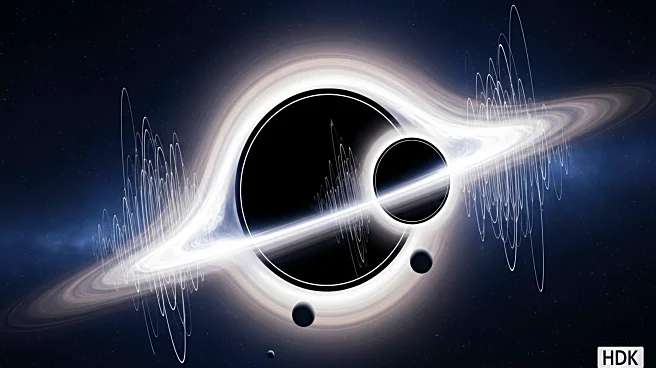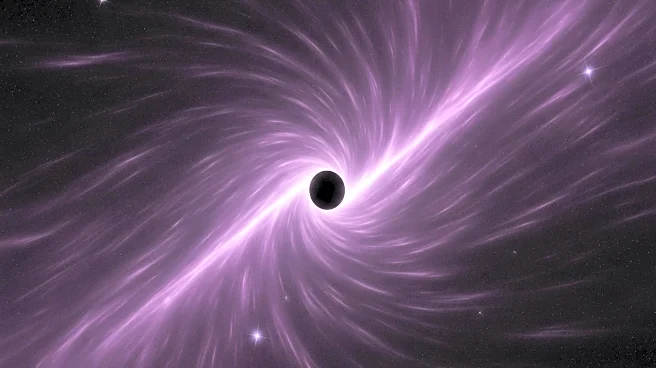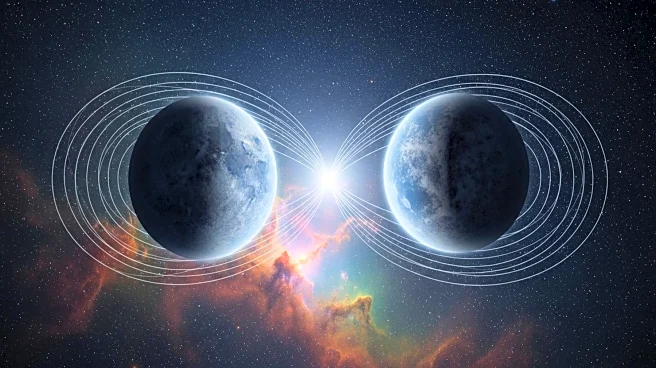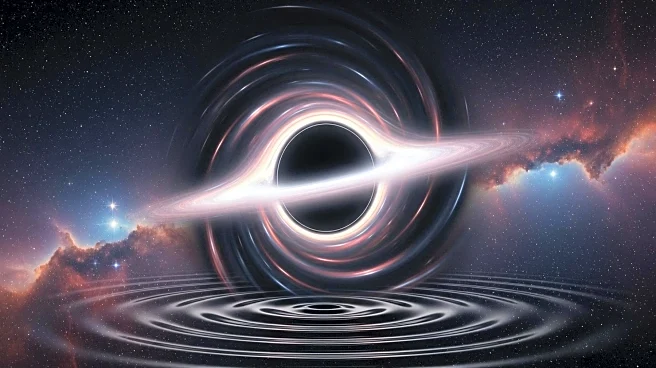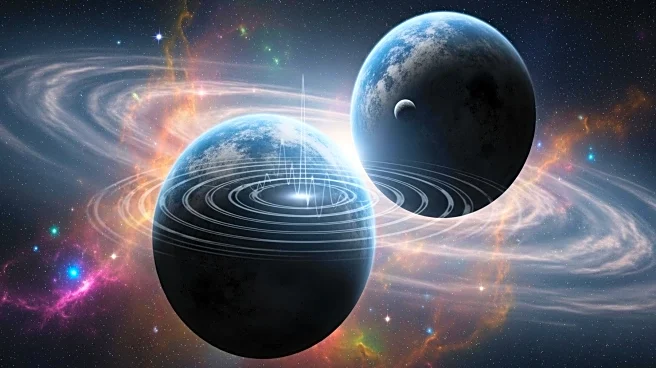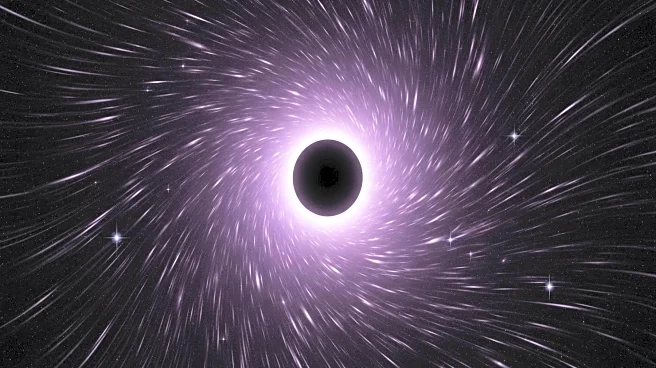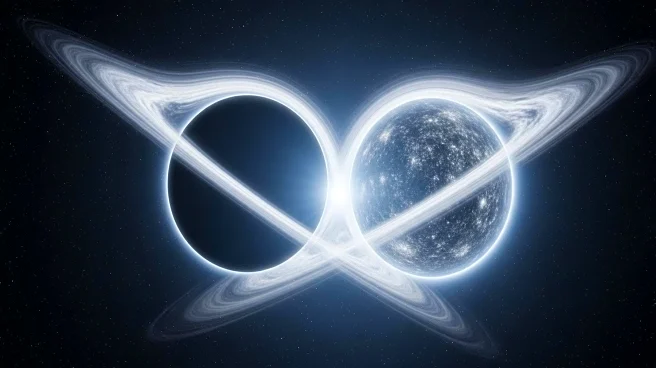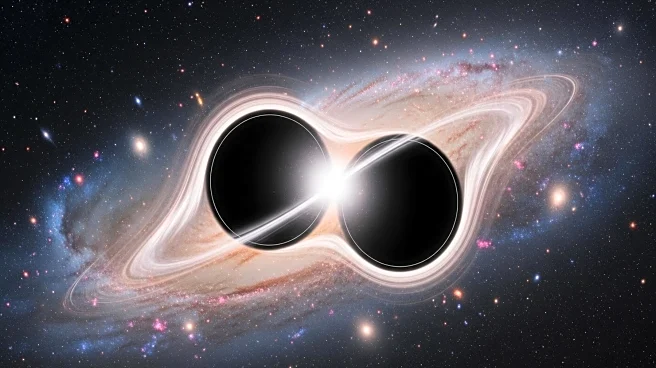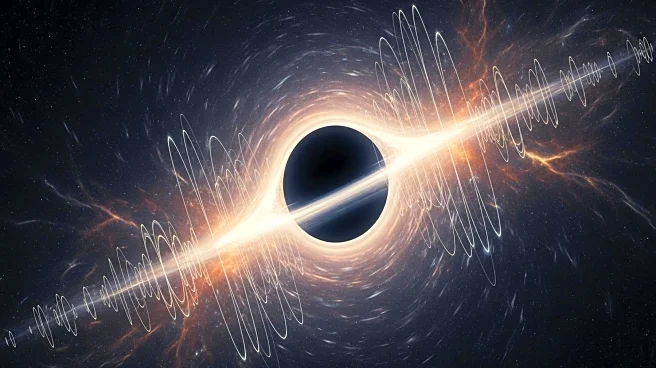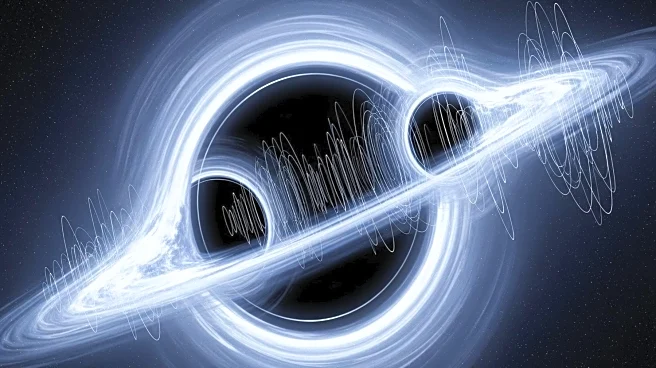What's Happening?
Scientists have successfully measured the recoil velocity from a collision between two black holes, marking a significant milestone in astrophysics. This event, known as a 'natal kick,' occurs when a newly merged black hole is propelled through space due to the gravitational waves produced by the collision. The gravitational wave signal, identified as GW190412, was detected by the Advanced LIGO and Virgo detectors in 2019. The collision involved two black holes of vastly different sizes, causing the newly formed black hole to shoot through space at a speed of over 31 miles per second. This velocity is sufficient to eject the black hole from its original star cluster, preventing further mergers that could lead to the formation of a supermassive black hole. The study, published in Nature Astronomy, highlights the ability of gravitational waves to provide detailed insights into the motion of cosmic objects billions of light-years away.
Why It's Important?
Understanding the dynamics of black hole mergers and the resulting 'natal kicks' is crucial for tracking the formation of supermassive black holes, which can be up to 50 billion times the mass of the sun. These insights are vital for astrophysics, as they help explain the growth and evolution of black holes in the universe. The ability to measure the speed and direction of these kicks allows scientists to reconstruct the motion of black holes, offering a deeper understanding of cosmic phenomena. This research could lead to advancements in detecting and analyzing gravitational waves, furthering our knowledge of the universe's structure and behavior.
What's Next?
The research team plans to continue searching for more black hole mergers to measure using both gravitational waves and visible light. This ongoing investigation aims to provide deeper insights into the growth of black holes and the mechanisms behind their formation. By expanding the scope of their studies, scientists hope to uncover more about the cosmic monsters that populate the universe, potentially leading to new discoveries in astrophysics.
Beyond the Headlines
The ability to measure and analyze 'natal kicks' opens up new possibilities for understanding the universe's evolution. This research not only enhances our knowledge of black hole dynamics but also contributes to the broader field of gravitational wave astronomy. The findings could have implications for the study of other cosmic phenomena, such as neutron star mergers and the behavior of dark matter.

